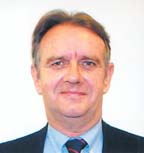
Question:We tried using UV adhesives to increase our productivity a few years go and were disappointed with them, mainly because there were areas on our parts that didn't get much exposure to the lamp and were under-cured or sometimes not cured at all. Are there any systems that give the high-speed production of UVs but don't have these problems?
Answer:Adhesive systems that use ultraviolet (UV) or visible light to begin the curing process are intrinsically very attractive systems to the manufacturing engineer, allowing assembly of components and then "curing on command" through exposure to UV irradiation. However, the two major negatives of these systems are the fact that they don't cure when not exposed to the light in so-called "shadow areas" and cure is also inhibited by oxygen in the air. This is particularly important in complex assemblies such as in electronics where an adhesive might wick into small holes or gaps. In recent years, systems have been developed that overcome these problems by heat curing, using a surface activator or incorporating some urethane chemistry in the systems, which uses free isocyanate groups to cure with atmospheric moisture. One company has shown that atmospheric oxygen can be used to cure in the shadow areas by incorporating molecules with high levels of acryloxy functionality coupled with a metallic drier. An interesting alternative type of system uses cyanoacrylate adhesives that also cure with UV radiation. This type of system combines the ability of cyanoacrylates to cure virtually instantly in small-gap situations and also to cure by UV in exposed areas.
Question:I am an architect and understand that polysulfides are very high-performance sealants, but I can't find a lot of information about them. Could you give me a short primer on these materials?
Answer:Polysulfides owe their unique properties as sealants to the presence of both sulphur atoms and what chemists call "formal" groups in the polymer backbone. The formal groups contribute flexibility while the sulphur imparts excellent chemical resistance. Polysulfides also have extremely low permeability to air, water and moisture vapor.
Most polysulphides are two-component systems and cure by interaction with a hardener that contains an oxidizing agent. Polysulfides are used as construction sealants, marine sealants and industrial sealants, and are also used in aerospace applications where resistance to jet fuel is necessary. They are used in the insulated glass market by window manufacturers for double-glazing applications, but have lost much of their market share to materials like polyisobutylene-based ("butyl") sealants in recent years. Applications in the construction industry are also under attack from alternative sealants such as high-performance silicones and polyurethanes. There have been concerns over supply and pricing in the last two years or so since one of the largest manufacturers of base polymers decided to exit the market completely. I would have no hesitation - from a technical point of view - in recommending polysulfides to you for demanding applications, but it might also be prudent to evaluate alternative technologies.
Q&A Exchange is written by Dr. Dave Dunn of F.L.D.Enterprises, a technical consultancy and full-service industrial market research firm specializing in the adhesives, sealants, specialty rubbers, and plastics fields. Dr. Dunn is a former vice president and director of Loctite Corp., and has spent many years troubleshooting adhesive and sealant problems. Questions for publication should be directed to him at 242 Trails End, Aurora OH 44202; (330) 562-2930; fax (865) 251-9687; e-mail DrDave242@att.net ; or visit http://www.fldenterprises.com .